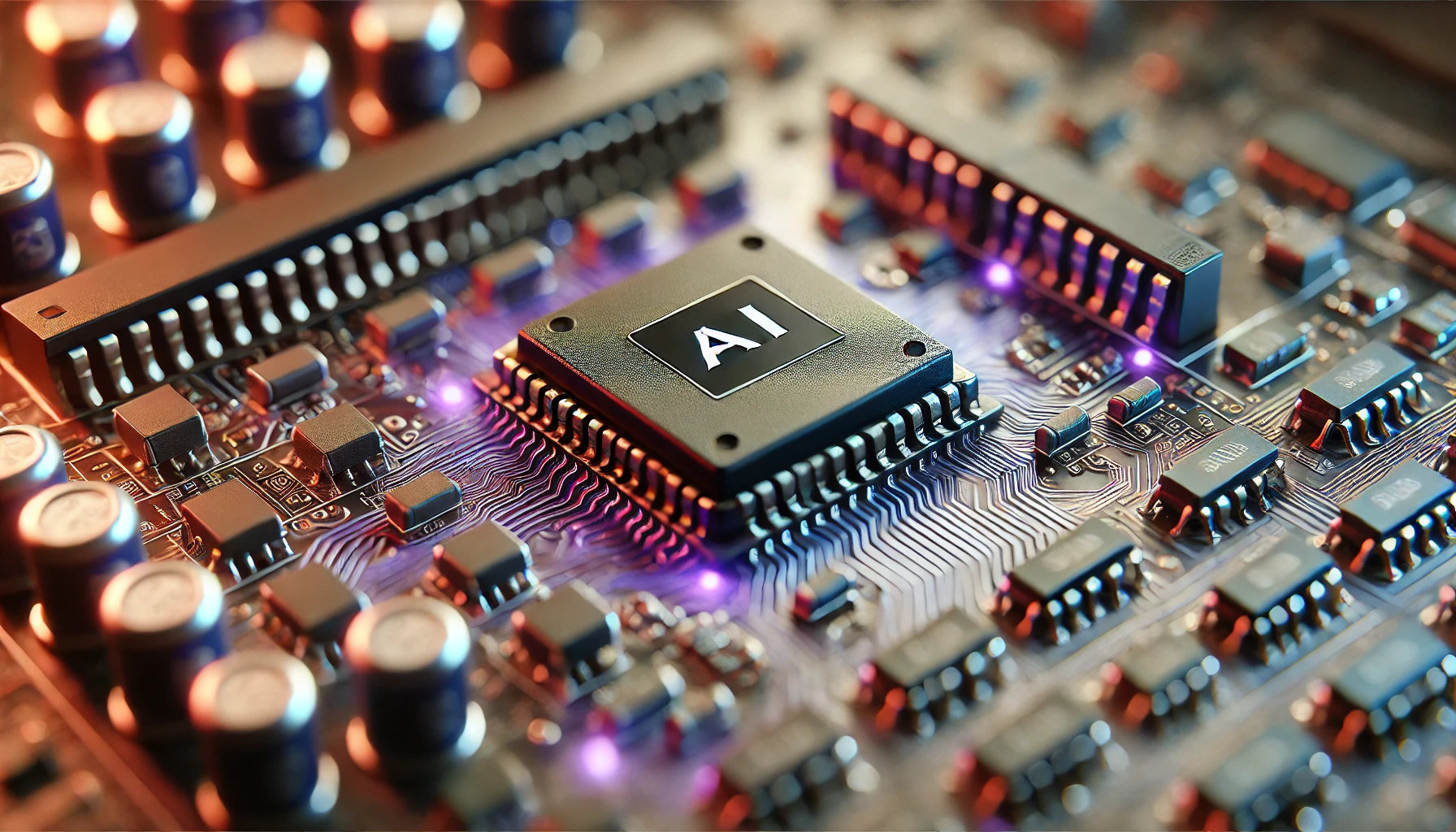Machine Learning vs. Deep Learning – A Comparison
A key component of artificial intelligence is training algorithms to make predictions or judgments based on data. This process is known as machine learning or deep learning.
Two of the most well-known subfields of AI are machine learning and deep learning. In both cases, algorithms are trained to generate predictions or judgments based on data inputs. However, the complexity and volume of data that each algorithm can manage and the techniques used to train and improve their models vary.
What is Machine Learning?
Machine learning focuses on building algorithms and models that can automatically discover patterns and insights from data without being explicitly coded. Machine learning algorithms can make predictions or classifications based on input data. These algorithms can also find patterns or anomalies in massive datasets.
Features of Machine Learning
- Learning from data: Machine learning algorithms learn patterns and relationships from large amounts of data. The data can be structured or unstructured, serving as the basis for training models.
- Automation and adaptation: Machine learning systems can automatically learn and improve from experience without being explicitly programmed. They adapt to changing data and conditions, making them flexible and suitable for dynamic environments.
- Predictive modeling: Machine learning is often used for predictive tasks, where the goal is to make predictions or forecasts based on historical data. This can include predicting customer behavior, stock market trends, disease diagnosis, or weather forecasting.
- Pattern recognition: Machine learning algorithms recognize patterns and relationships within data. They can identify complex patterns that may not be apparent to humans, generating insights and discoveries.
- Generalization: Machine learning algorithms make predictions on fresh, untainted data by generalizing from the data they were trained on. Instead of memorizing the training data, the objective is to create models that precisely predict unobserved instances.
- Supervised, unsupervised, and reinforcement learning: Machine learning can be categorized into different types based on the learning approach. Supervised learning uses labeled data with input-output pairs, unsupervised learning discovers hidden patterns and structures in unlabeled data, and reinforcement learning learns through interactions with an environment and rewards or punishments.
Advantages of Machine learning
- Automation and Efficiency: Machine learning algorithms can automate complex and repetitive tasks, increasing efficiency and productivity. Once trained, models can process large amounts of data and make predictions or decisions quickly.
- Pattern Recognition: Machine learning algorithms excel at identifying patterns and trends in large datasets. This enables them to uncover valuable insights and make predictions or classifications based on the identified patterns.
- Adaptability and Generalization: Machine learning models can adapt to new data and learn from experience. They can generalize from training data to make predictions on unseen data, which makes them valuable in situations where explicit programming rules may be difficult to define.
- Handling Complex and Large Datasets: Machine learning algorithms can handle vast amounts of data and extract meaningful information. They can uncover hidden patterns and relationships that may not be apparent to humans due to the complexity or scale of the data.
- Personalization and Recommendation Systems: Machine learning is widely used in recommendation systems, where it analyzes user preferences and behavior to provide personalized recommendations. This is seen in platforms like Netflix, Amazon, and Spotify, where personalized content and product suggestions enhance the user experience.
Drawbacks of Machine Learning
- Data Dependency: Machine learning models heavily rely on high-quality, representative, and diverse training data. If the training data is biased, incomplete, or poor quality, the resulting model may exhibit similar issues or make inaccurate predictions.
- Overfitting: When a machine learning model excels on the training data but fails to generalize to new data, overfitting has taken place. This may occur if the model is trained on insufficient data or grows overly complex.
- Interpretability and Explainability: Deep neural networks are one machine learning model that can be very complex and difficult to assess. This lack of interpretability raises issues in crucial industries like banking or healthcare, where it’s critical to understand how decisions are made.
- Computational Resource Requirements: Training complex machine learning models often requires significant computational resources, including powerful hardware and substantial amounts of memory. Deploying these models in resource-constrained environments may be challenging.
- Ethical Considerations: Machine learning models can inherit biases from the training data, leading to unfair or discriminatory outcomes. It is essential to ensure machine learning algorithms’ fairness, transparency, and ethical use to prevent reinforcing existing biases or perpetuating discrimination.
What is Deep Learning?
Artificial neural networks are trained in deep learning, a subfield of machine learning, to learn from data and generate predictions or suggestions. The neural networks used in deep learning usually have numerous layers of connected nodes or artificial neurons, which can mimic complicated relationships in the data. This is why the technique is known as “deep” learning.
Deep learning is utilized in many fields, such as robotics, speech recognition, computer vision, and natural language processing. In many of these domains, it has cutting-edge performance and has made substantial advancements in areas like autonomous driving, speech and picture recognition, and language translation.
Large volumes of labeled data are often needed to train a deep learning model to teach it how to spot patterns and make predictions. The artificial neurons of the network’s weights and biases are changed during training so that the network can correctly categorize or predict new data. Once trained, the model can make predictions based on fresh, unexplored data.
Features of Deep Learning
- Highly Scalable: Large datasets can be used to train deep learning models and can be scaled to handle increasingly bigger datasets. They are, therefore, perfect for addressing intricate issues that demand a lot of information. For instance, the roughly 14 million photos in Google’s ImageNet dataset train deep-learning models for image recognition.
- Highly Accurate: Deep learning models can be very accurate, especially when trained on large datasets. This is because they can learn complex patterns in the data that would be difficult to identify using traditional machine-learning techniques. For example, deep learning models accurately classify images, detect objects in images, and translate languages.
- Robust: Deep learning models are relatively robust to noise and outliers in the data. This means they can still perform well even if the data is not perfectly clean. For example, deep learning models can learn to classify images even if they are blurry or contain other noise.
- Flexible: Numerous issues can be resolved with deep learning models. This is due to their capacity to adapt to new circumstances and learn from data. Deep learning models, for instance, have been used for speech recognition, image recognition, natural language processing, and more.
- End-to-end Learning: Deep learning enables end-to-end learning, where the model learns to perform a task directly from the raw input data to the desired output. This eliminates the need for handcrafted intermediate representations or feature extraction pipelines. By jointly optimizing all the layers of the network, deep learning models can learn complex mappings from input to output.
Advantages of Deep Learning
- High Accuracy: Deep learning models are accurate at tasks such as image classification, natural language processing, and speech recognition. For example, deep learning models can classify images with over 90% accuracy.
- Competitive Performance: Deep learning models have consistently outperformed competing approaches in several competitive AI challenges and benchmarks, demonstrating their ability to resolve complicated issues.
- Handling large and complex data: Deep learning models are capable of handling big and complex data, and they have been utilized to achieve cutting-edge performance on a variety of tasks.
- Wide Range of Applications: Deep learning has been effectively used in a variety of applications, including robotics, speech recognition, machine translation, recommendation systems, and image and video analysis.
- Potential for Discoveries: Deep learning models can be used to find novel data patterns that are challenging to find using conventional machine learning methods. Deep learning models, for instance, have been applied to the development of new materials and the discovery of novel pharmacological targets.
Drawbacks of Deep Learning
- Data Requirements: Deep learning models need a lot of data to train on. This can be difficult, especially for novel topics or little available data. For instance, a huge dataset of photographs of cats and dogs is required if you wish to train a deep-learning model to categorize images of cats and dogs.
- Computational Complexity: Deep learning models can be expensive to compute and train. This could be challenging for applications that require real-time performance. For instance, installing a deep learning model to rapidly classify photographs calls for a strong computer.
- Interpretability: Interpreting deep learning models can be challenging, making it hard to comprehend how the model operates and justify its conclusions. For instance, explaining the reasoning behind a deep learning model’s classification of an image as a cat could be difficult.
- Vulnerability to Adversarial Attacks: Deep learning models can be vulnerable to adversarial attacks, which are attacks that intentionally try to fool the model. For example, an adversarial attacker could try to fool a deep learning model that classifies images of cats and dogs by adding small perturbations to images of dogs that make them look like cats.
Machine Learning vs. Deep Learning: A Comparision
Data Representation
- Machine Learning: Data representation and feature engineering are significant in machine learning. Domain experts often manually extract relevant features from the data, which are then used as inputs to the machine learning algorithms.
- Deep Learning: Conversely, deep learning automates the feature engineering process using neural networks with multiple hidden layers. Because deep learning models learn hierarchical representations of the data from the original raw input, they do not require explicit feature engineering.
Model Complexity
- Machine Learning: Traditional machine learning models have fewer parameters and a simpler structure than deep learning models. They typically rely on simpler algorithms like decision trees, support vector machines, or linear regression.
- Deep Learning: Deep learning models, specifically deep neural networks, are more complex and contain many interconnected layers and nodes. This complexity enables deep learning models to capture intricate patterns and relationships in the data but also requires more computational resources for training and inference.
Training Data Size
- Machine Learning: Machine learning models often perform well with relatively smaller training datasets. They can generalize from a limited amount of data if it is representative and diverse.
- Deep Learning: Deep learning models, particularly deep neural networks, require extensive training data to learn complex representations effectively. They benefit from big data scenarios where the availability of massive datasets aids in capturing nuanced patterns.
Interpretability
- Machine Learning: Traditional machine learning models are often more interpretable, relying on explicit features and algorithms. It is easier to understand and explain the decision-making process of models such as decision trees or linear regression.
- Deep Learning: Deep learning models, particularly deep neural networks with numerous layers, are known for their black-box nature. They can be challenging to interpret due to the high dimensionality and hierarchical representations learned by the model. Efforts are being made to develop methods for interpreting and explaining deep learning models, but it remains an active research area.
Application Domains
- Machine Learning: Several fields, including image identification, natural language processing, fraud detection, and recommendation systems, have effectively used machine learning approaches. They are appropriate for situations where feature engineering can efficiently gather pertinent data.
- Deep Learning: Deep learning has gained significant prominence in computer vision, speech recognition, and natural language understanding domains. Deep learning models excel at learning hierarchical representations and have achieved state-of-the-art performance in tasks like image classification, object detection, machine translation, and speech synthesis.
Machine Learning vs. Deep Learning: Which is Better?
The answer depends on the specific problem you are trying to solve. Deep learning is a good choice if you have a large, unstructured data set and you need to achieve high accuracy. However, machine learning may be a better option if you have a smaller data set or don’t need to achieve the highest accuracy.
Here is a table summarizing the key differences between machine learning and deep learning:

Conclusion
In conclusion, within the broader topic of artificial intelligence, machine learning, and deep learning are two related but separate fields. Deep learning is a subtype of machine learning that uses artificial neural networks to learn from complex and enormous amounts of data. Machine learning is a type of AI that involves training algorithms to make predictions or judgments based on data inputs.
Ultimately, the choice between machine learning and deep learning will depend on the specific problem and the type of data available. Both fields have strengths and limitations, and researchers and practitioners must carefully evaluate their options before deciding which approach to use.


